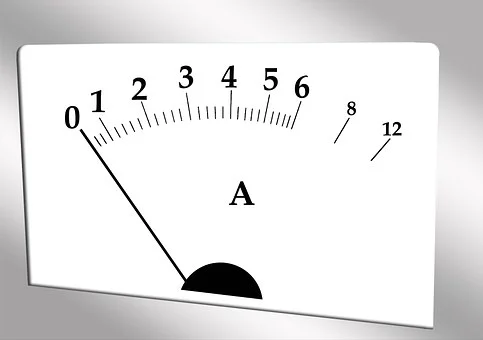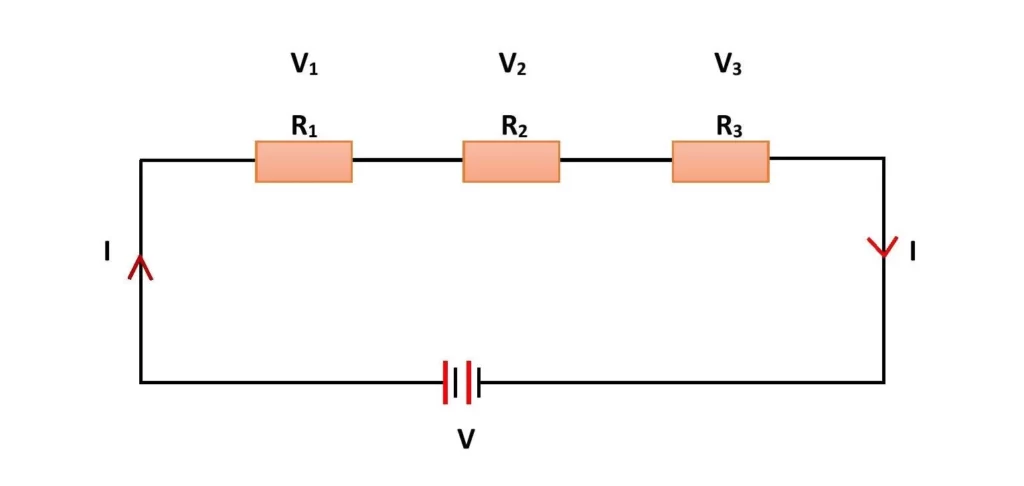Electricity is one of the most essential things in our daily life. To deal with an electrical circuit, we need to know the physical quantities associated with it. Current, Voltage, resistance, power, etc. are among those quantities. Many scientists have given various laws of electricity and explained how to determine such physical quantities in a given circuit. Ohm’s law gives a relation between voltage, current and resistance. Kirchhoff’s laws help us to find electric current and node voltage at a junction point of a circuit. In this article, we’re going to explain what is an electric current, its equation, types, conventional direction and other things related to it.
Contents of this article:
- What is an electric current?
- Equation of current
- Units and dimension of current
- What is the conventional direction of electric current?
- How can we determine the direction of current flow in a circuit?
- Types of electric current
What is electric current?
Subatomic particles like electrons, protons and ions have electric charges. When these particles move, we call it a current. In simple words, the current flow is the flow of charged particles. It is symbolized by the alphabet ‘I‘.
The electric current is defined as the amount of electric charges flows per unit time.
Do you know what causes the flow of electric charges? It’s the electric potential difference or the voltage of a battery.
Properties of electric current
- It’s a fundamental physical quantity in S.I. system.
- Flow of charged particles is responsible for electric current.
- Current is a flow of energy. It has waveforms.
- The direction of current is opposite to the direction of electron flow.
The equation for electric current flow
If Q amount of charge flows through the cross-section of a conductor in a time t, then the formula of electric current in the conductor is
\small\color{Blue}I = \frac{Q}{t}………….(1)
The magnitude of the electric charge of an electron is e = 1.6 × 10-19 Coulombs. If N number of electrons flows for a duration t, then the amount of charge flow in that duration is Q = eN. Then the above formula can be written as
\small\color{Blue}I = \frac{eN}{t}…………(2)
There is another equation of electric current that relates it to voltage and resistance. Ohm’s law of electricity gives this equation. If a voltage V is applied across a conductor of resistance R, then the amount of current flow through the conductor will be
\small\color{Blue}I = \frac{V}{R}…………(3)
Unit and Dimension of Current
Electric current is one of the fundamental physical quantities in SI system. It has independent units and dimensional formula.
The SI unit is Ampere and CGS unit is esu per second. Its dimension is [I] or [M0L0T0I].
From equation-(1), one can say that Coulomb per second (C.s-1) is another unit of current.
Definition of 1 Ampere current
One can define an ampere in two ways by using equation-(1) and equation-(3). In equation-(3), if you put V = 1 volt and R = 1 ohm, then the amount of current will become I = 1 ampere. Therefore,
The amount of current flow through a conductor of resistance 1 ohm when a voltage of 1 volt is applied across the conductor is said to be 1-ampere current.
Again, In equation-(1), if you put Q = 1 coulomb and t = 1 second, then the amount of current will become I = 1 ampere. Then,
If 1 coulomb of electric charge flows through the cross-section of a conductor in 1 second, then the amount of current through the conductor will be 1 ampere.
What is the conventional direction of electric current?
Current is not a vector quantity, it’s a scalar. Still, it has a direction. The conventional direction of current flow is along the direction of the motion of positive charges. In most cases, free electrons are responsible for current flow. Therefore scientists mentioned its direction by comparing the direction of electron flow. They said,
Electric current flows in the opposite direction of the flow of free electrons.
Sounds like we can determine its direction only if we know the direction of electrons. But it is impossible to identify the direction of electron flow because we cannot see electrons any way.
Then what to do? Don’t worry, we have some other methods to find it.
How to find electric current in a circuit?
There are some devices that can measure the magnitude and direction of current in a circuit. Its magnitude can be calculated by using the appropriate equation.
How to measure the amount of current flow in a circuit?

- An Ammeter can be used to measure the amount of current through a resistance.
- Multimeter is widely used to measure both AC and DC current.
- If the values of Voltage and resistances are given then the current can be calculated by using V = IR formula.
Here is a guide for measuring electric current and voltage for the verification of Ohm’s law experimentally.
How to determine the direction of current flow in a circuit?

- Electric current flows from the positive terminal of a cell or battery to its negative terminal. Hence observing the terminals of a battery one can identify the direction of current in a mesh. In above circuit, the positive terminal of the battery is on the left side and hence the current flows clockwise. But this method cannot be applied to a complicated circuit having more than two or three loops.
- For a complicated circuit, ammeters or multimeters can be used to determine the direction of current flow in various branches of the circuit. In this case, you have to observe the deflection of the pointer of the device.
What are the different types of electric currents?
According to the waveforms, there are three types of electric currents –
- Direct current (DC)
- Alternating current (3)
- Pulsating current
Direct current does not alter its direction or polarity and provides a steady amount of current flow through a circuit if the voltage is not charged. Alternating current changes its polarity periodically and produces sinusoidal or rectangular waveforms. Pulsating current is neither a DC nor an AC, its magnitude changes like a pulse but its polarity remains the same.
Effects of electric current
Electric current has wide uses. We cannot spend a week without electricity. It is used as a source of light, to charge mobiles, laptops, electric cars, etc.
But we need to be careful while dealing with electricity. It has a huge bad effect. The current is responsible for electric shock. A sufficient amount of current can kill someone. Again short circuit can burn a house, office and other properties.
This article explains the definition, equation, direction and measurement of electric current. This is all from this article.
Thank you.
Related articles: